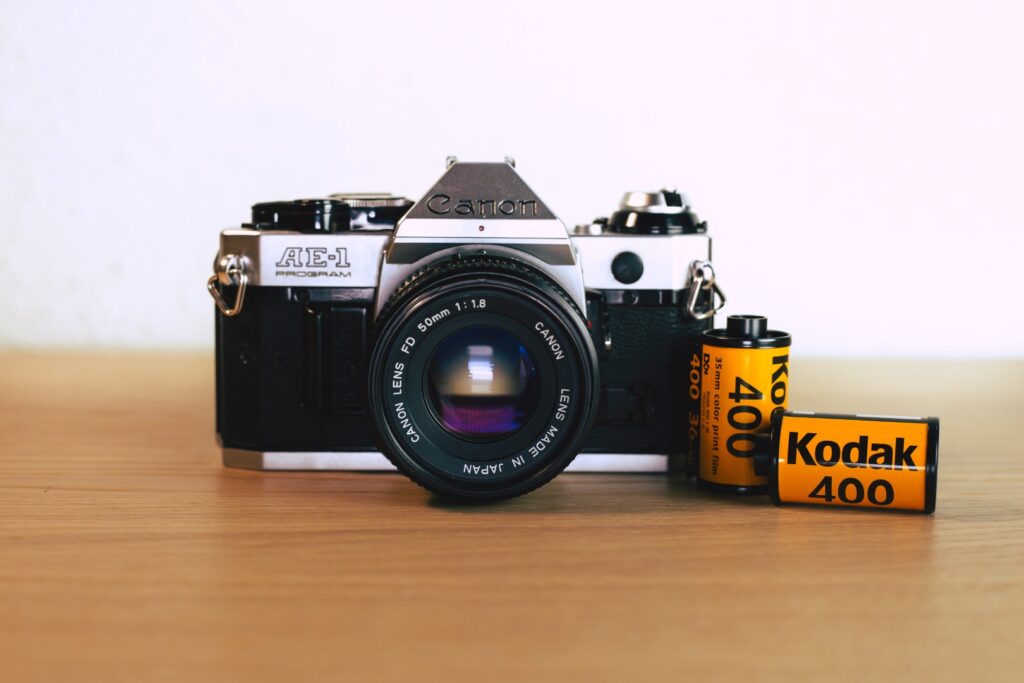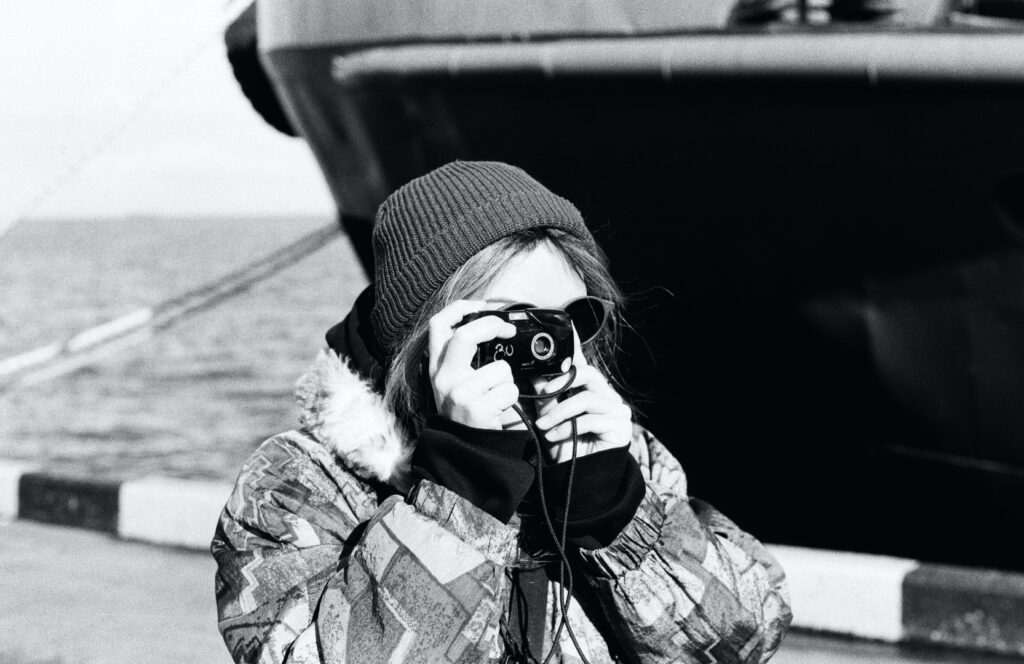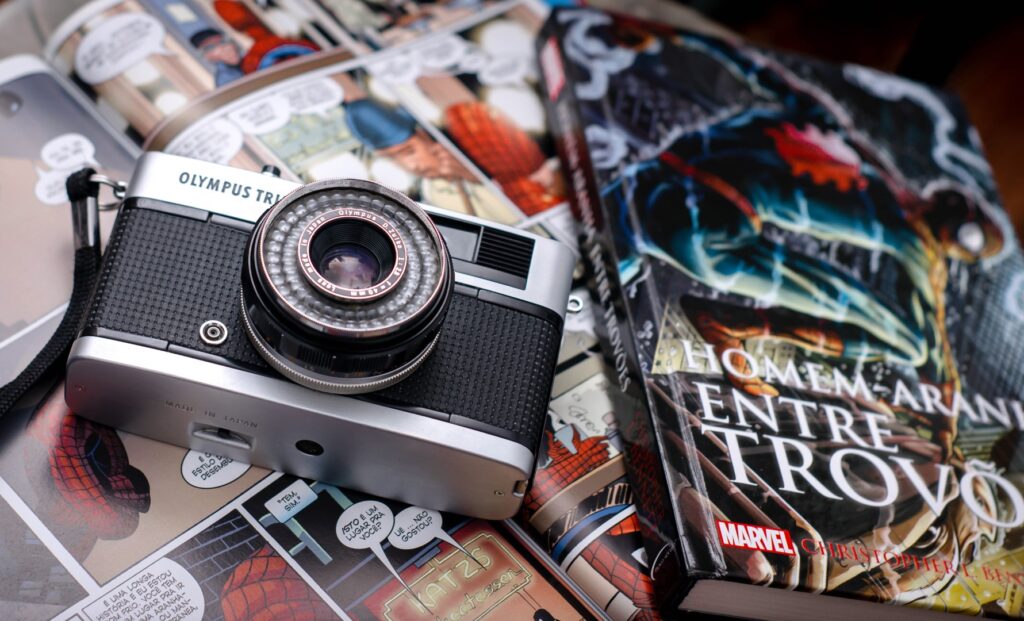Photography is not merely an act; it’s an art form, a means of capturing moments, stories, and emotions. For those who revel in the nostalgia and charm of analog photography, the Canon AE-1 and AE-1 Program are cameras that need no introduction. Known for their reliability and exceptional performance, they have been favorite choices among photographers for decades.
When shooting with the Canon AE-1 and AE-1 Program, the film you use is just as important as the camera itself. The right film can make your photographs sing with vibrancy, depth, and detail. This guide aims to simplify your film selection process and help you find the perfect film for your Canon AE-1 or AE-1 Program.
The Different Types of Film Stocks
Choosing the right film can be a tricky task, particularly for beginners. To help you make an informed decision, let’s look at the three different types of film stocks.
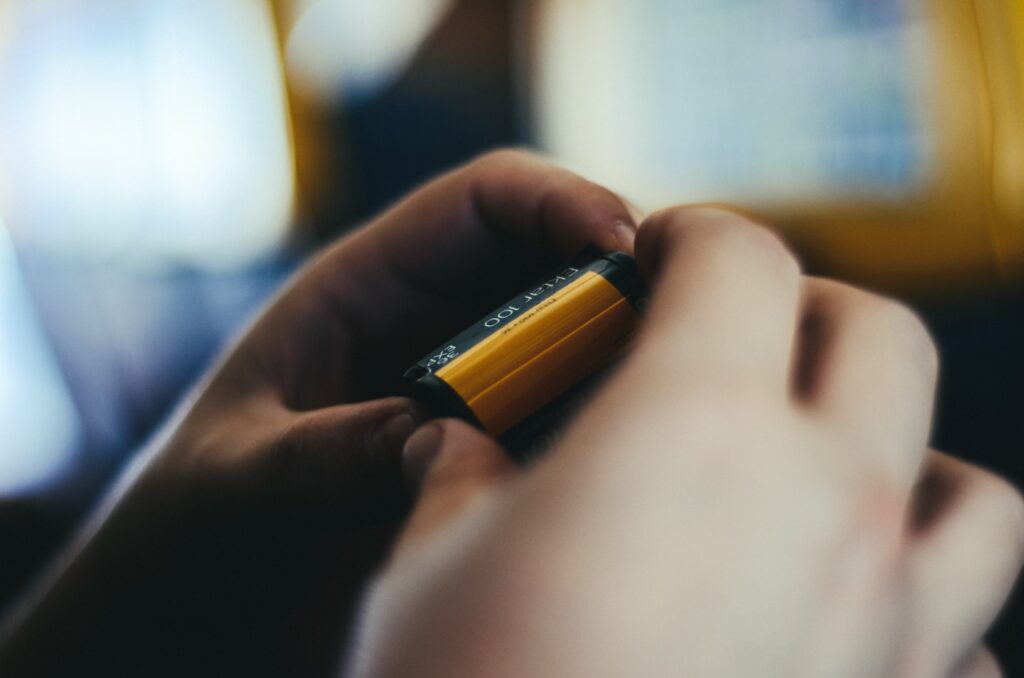
Black and White Film
Black and white film is the classic choice, the grandparent of all film types. It’s where photography began, and even today, it holds a special place in the heart of many photographers. Black and white film captures images in varying tones of grey, translating the world around us into a monochrome canvas. This type of film is excellent for capturing texture, contrast, and mood in a timeless fashion.
Color Negative Film
Color negative film is what most people think of when they picture film photography. It produces a negative of the image, where colors and brightness levels are reversed. When processed, the negatives are then turned into positive prints with accurate and vibrant colors. This type of film offers a great deal of flexibility, as it’s forgiving of exposure errors and allows for alterations during the scanning and printing stages.
Slide Film
Slide film, or reversal film, creates a direct positive image on a transparent base. This means that the developed film contains the actual image in its true colors and brightness, rather than a negative. Slide film delivers rich, vibrant colors, and high contrast, giving your photos a unique and striking look. However, it’s less forgiving than color negative film when it comes to exposure accuracy. Shooting slide film requires careful attention to exposure settings, making it a more challenging but rewarding choice for many photographers.
Choosing between these film types often comes down to personal preference and the specific look you’re trying to achieve. No matter your choice, each type will provide a unique touch to your photographs, enhancing your overall photography experience with the Canon AE-1 and AE-1 Program.
Related content on the Canon AE-1/Canon AE-1P:
- The Ultimate Guide to Batteries for Your Canon AE-1 Program
- How to replace the light seals of the Canon AE-1 Program
- Is the Canon AE-1 a good Camera? And other common questions
- Reviewing the Canon AE-1 Program
- Choosing the Best Lenses for the Canon AE1 and AE1 Program: A Comprehensive Guide
Considerations When Choosing a Film for your Canon AE-1 and AE-1 Program
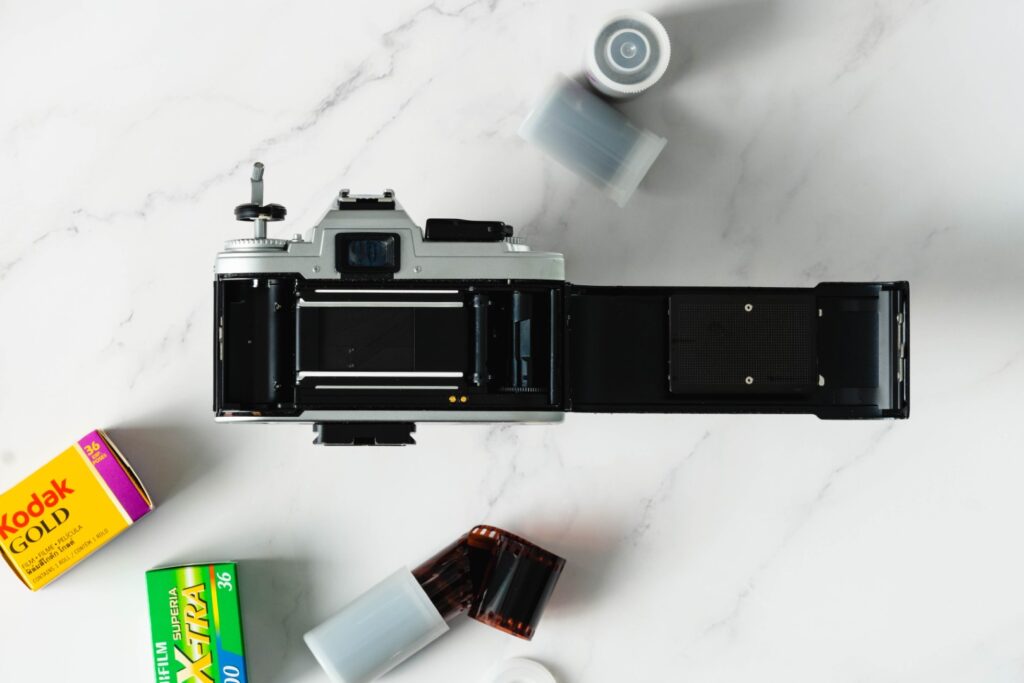
Selecting the ideal film for your Canon AE-1 or AE-1 Program is not a one-size-fits-all affair. Certain factors should guide your decision, ensuring you match the right film to your shooting conditions, style, and preferences. Let’s delve into these key considerations.
Film Speed
Film speed, denoted by an ISO number, is a measure of the film’s sensitivity to light. Low ISO films (e.g., ISO 100 or 200) are less sensitive to light, ideal for brightly lit conditions, and yield images with fine grain and high detail. High ISO films (e.g., ISO 800 or 1600) are more sensitive to light, suited for low light conditions but produce images with more noticeable grain.
When choosing a film, consider the lighting conditions you’ll be shooting in. For outdoor photography in bright daylight, a low ISO film would work well. For indoor or low-light scenes, you might want to opt for a higher ISO film. Remember, the Canon AE-1 and AE-1 Program can handle a wide range of film speeds, granting you the flexibility to explore different lighting conditions.
Aesthetic Qualities of the Film Stock
Every film stock has a unique character. Some films offer vivid, saturated colors, while others provide a more muted, vintage look. Black and white films differ in contrast and grain structure. The aesthetic quality of a film can significantly impact the mood and feel of your images.
When choosing a film, consider the aesthetic you want for your photos. Do you want bold, lifelike colors, or do you prefer a more subdued, classic feel? Are you after a high-contrast, gritty look, or something softer? Looking at sample images shot with different film stocks can help you decide which aesthetic appeals to you most.
Developing and Scanning Film
Finally, consider the practical aspects of film photography: developing and scanning. Some films require specific developing processes, which can affect the availability and cost of professional developing services. Likewise, scanning can differ depending on the film. Color negatives and black and white film are typically easier and cheaper to scan than slide film.
If you plan to develop and scan your film at home, ensure you’re equipped to handle the type of film you choose. If you’re using a lab, check that they can develop and scan your chosen film stock, and consider the costs associated with these services.
Top Film Choices for Canon AE-1 and AE-1 Program
Your Canon AE-1 or AE-1 Program deserves a high-quality film to truly bring out its capabilities. Here are our top film recommendations across color, black and white, and slide categories, offering a range of aesthetics to suit your artistic vision.
Color Films
Kodak Portra 400: Renowned for its exceptional color rendition and fine grain, Kodak Portra 400 is a versatile film that performs well under a variety of lighting conditions. It’s favored for its natural skin tones, making it an excellent choice for portraits. However, its lush color palette also works beautifully for landscapes and general-purpose photography. Check current prices here.

Kodak Ektar 100: If vibrant colors and ultra-fine grain are your preference, Kodak Ektar 100 is a fantastic choice. It boasts the finest grain of any color negative film, producing incredibly detailed images. Its saturated colors make it perfect for nature, travel, and outdoor photography. Check current prices here.
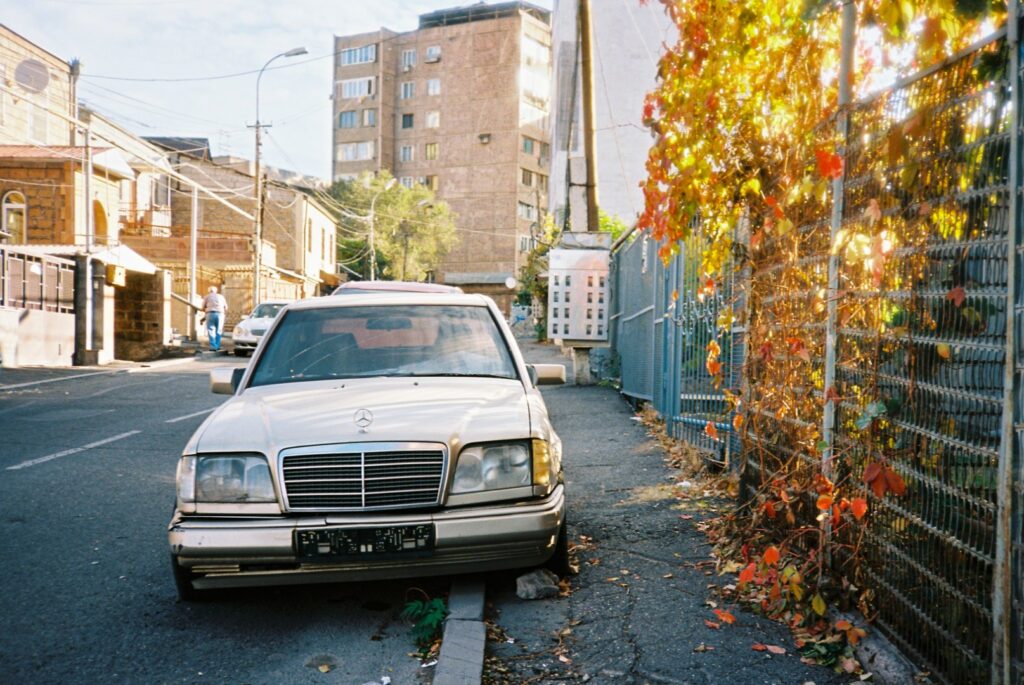
Fuji Pro 400H: Known for its unique color palette, Fuji Pro 400H delivers soft, pastel hues with an emphasis on green tones. It handles mixed lighting well and offers a wide exposure latitude, making it a reliable film for various situations, including portraits, landscapes, and weddings. Check current prices here.

Black and White Films
Ilford HP5: Ilford HP5 is a high-speed film offering a balance of contrast, detail, and excellent exposure latitude. It’s popular for its forgiving nature, as it’s capable of handling a range of lighting conditions and still produces striking images with well-defined grays and beautiful grain. Check current prices here.

Kodak Tri-X 400: A favorite among street and documentary photographers, Kodak Tri-X 400 is a classic black and white film stock. It’s noted for its rich contrast, excellent detail in shadows, and distinctive grain structure. Tri-X can add a dramatic touch to your images. Check current prices here.
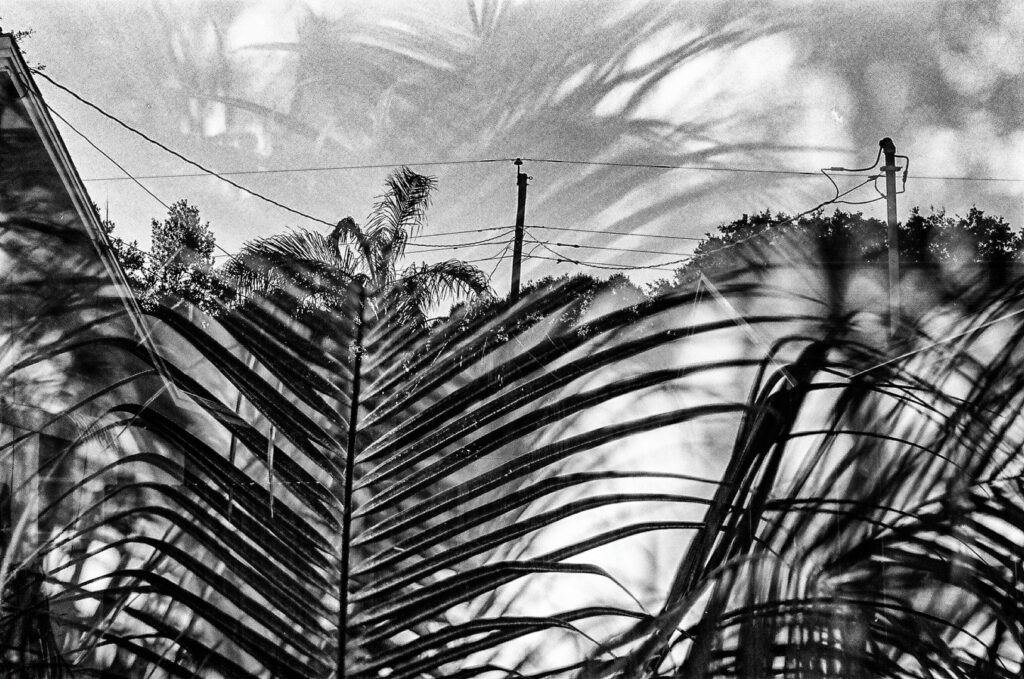
Fuji Neopan Acros II: Neopan Acros II is Fuji’s reissued version of its beloved Acros film. It’s an exceptionally fine-grained film with rich tonal range and sharp detail. Its ability to retain detail in shadows and highlights makes it great for landscape and architectural photography. Check current prices here.
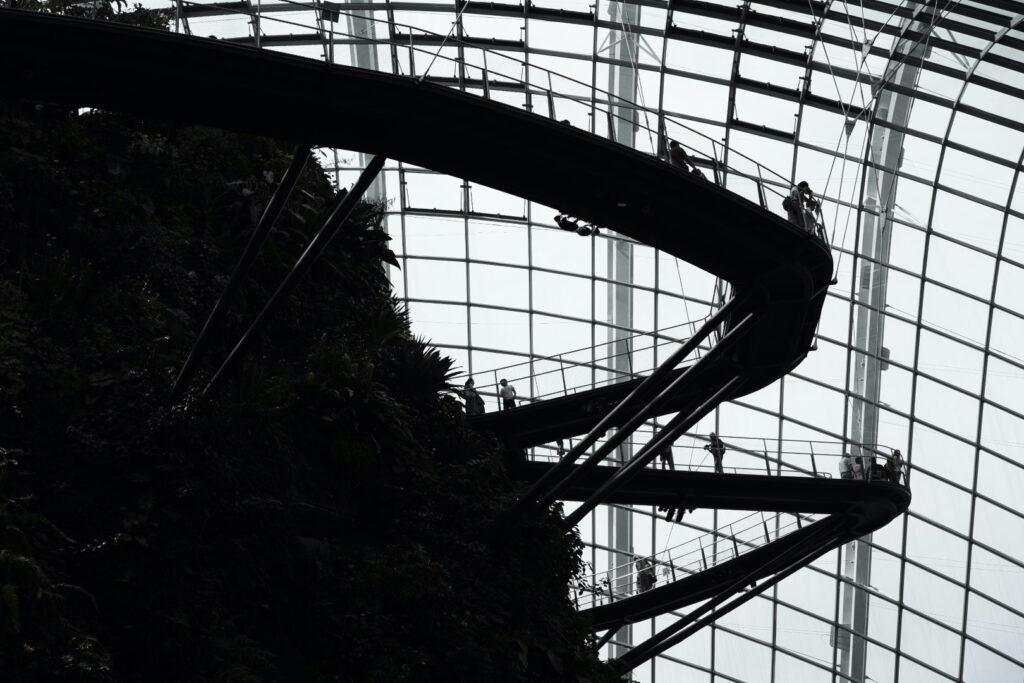
Slide Films
Fuji Provia 100F: Fuji Provia 100F is a professional-grade slide film known for its incredibly fine grain, vivid color reproduction, and high sharpness. Its well-balanced palette makes it suitable for a wide range of subjects, including nature, fashion, and product photography. Check current prices here.

Kodak Ektachrome E100: Reintroduced to the market in 2018, Kodak Ektachrome E100 is loved for its rich, saturated colors and excellent contrast. It offers fine grain and a neutral color balance, rendering realistic tones that are especially stunning for landscape and travel photography. Check current prices here.

Budget-Friendly Film Alternatives
High-quality film doesn’t always have to come with a hefty price tag. There are budget-friendly film options out there that still deliver impressive results, especially for those just starting out or anyone looking to practice and experiment without breaking the bank.
Kentmere 400: A popular choice among beginners, Kentmere 400 is a cost-effective black and white film from Harman Technology (the same company that produces Ilford films). While not as refined as some premium films, Kentmere 400 offers a nice grain structure and good sharpness, making it a solid, economical option for everyday shooting. Check current prices here.
Fomapan 400: Another budget-friendly black and white film, Fomapan 400 is a favorite among students and those new to film photography. It provides a good balance of contrast and grain and is flexible in terms of exposure, giving you some room for error as you’re learning. Check current prices here.
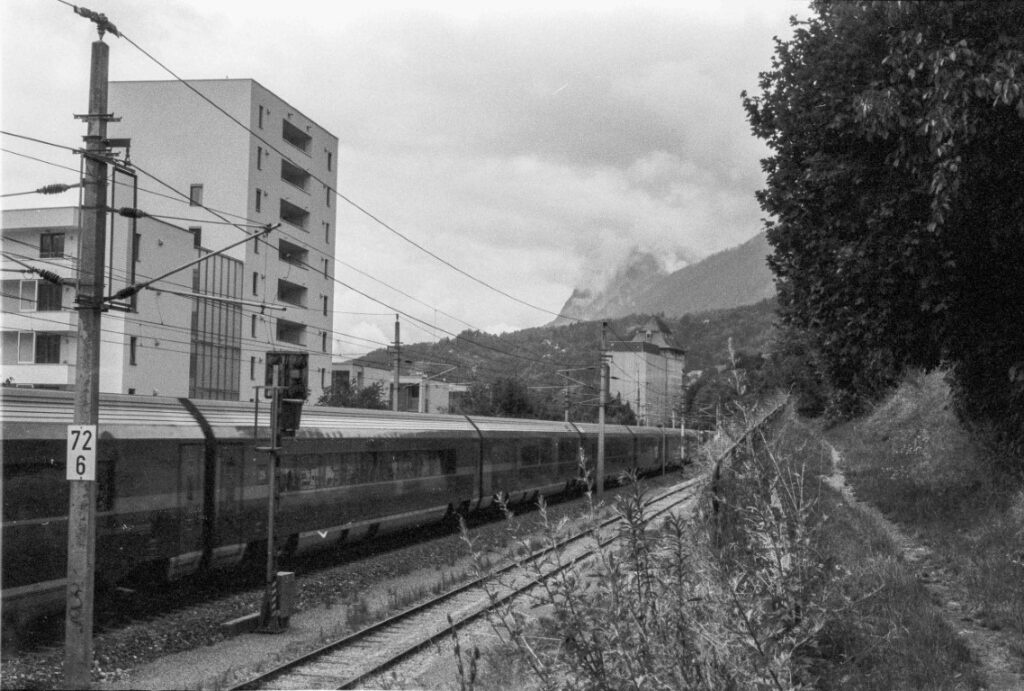
For more Foma 400 images, check out my Fomapan 400 Flickr album. We’ve captured our firsthand experiences with Fomapan 400 in this YouTube video, covering everything from shooting to self-developing the film. Take a look for a comprehensive look.
Kodak Gold 200: This is a budget-friendly color negative film that delivers warm, vibrant colors and consistent performance. Kodak Gold 200 is known for its slightly nostalgic look, reminiscent of past decades. It’s a great option for outdoor and well-lit situations, delivering pleasing results at an affordable price. Read our full review here. Check current prices here.
When it comes to film photography, remember that cost doesn’t necessarily equate to value. Some of the most interesting photos come from photographers experimenting with different film stocks, including these budget-friendly options. Don’t be afraid to try different films and see what works best for your Canon AE-1 or AE-1 Program.
Frequently Asked Questions about Using Film in Canon AE-1 and AE-1 Program
For beginners and even experienced film photographers, certain questions often arise. Here, we address some common inquiries regarding the use of film in the Canon AE-1 and AE-1 Program.
Can you use color film on a Canon AE-1?
Absolutely! The Canon AE-1 and AE-1 Program can both use color negative and slide film, in addition to black and white film. The choice of film type will depend on your artistic vision, shooting conditions, and the aesthetic you wish to achieve.
What size film do the AE-1 and AE-1 Program use?
Both the Canon AE-1 and AE-1 Program are designed to use 35mm film, which is the most common type of film readily available. It’s also worth noting that these cameras can handle a wide range of film speeds, from ISO 25 to ISO 3200.
How do you put 35mm film in a Canon AE-1 or AE-1 Program?
Loading film into the Canon AE-1 or AE-1 Program involves opening the film door, placing the film canister into the chamber, and threading the film onto the take-up spool. Close the door, advance the film, and you’re ready to shoot. It’s always a good idea to refer to the camera’s user manual or an online tutorial like ours for detailed instructions.
How to choose the right film for your camera?
Choosing the right film for your camera largely depends on your creative intent, shooting conditions, and personal preference. Factors such as film speed (ISO), color or black and white, grain, contrast, and color saturation should all be considered. Plus, the developing process and cost may also influence your choice.
Are the Canon AE-1 and AE-1 Program 35mm cameras?
Yes, both the Canon AE-1 and AE-1 Program are 35mm film cameras. They use 35mm film and feature interchangeable lenses, offering flexibility and versatility for different photographic situations.
How fast are the Canon AE-1 and AE-1 Program?
The Canon AE-1 and AE-1 Program offer shutter speeds ranging from 2 seconds to 1/1000th of a second, plus a bulb mode for long exposure photography.
What is the ISO range on Canon AE-1 and AE-1 Program?
These cameras feature an ISO range from 25 to 3200, allowing for the use of a variety of film types and speeds, which you can adjust to match the film you’re using.
What makes the Canon AE-1 and AE-1 Program special?
The Canon AE-1 and AE-1 Program were innovative for their time and continue to be popular today due to their ease of use, reliable performance, and the excellent image quality they produce. They were among the first cameras to include microprocessors, making them more accessible to the average consumer. Both cameras are versatile, rugged, and have a wide range of compatible lenses.
How do you wind up a Canon AE-1 or AE-1 Program?
Once you’ve exposed a roll of film in the Canon AE-1 or AE-1 Program, you’ll need to rewind it back into the canister before opening the camera. This is done using the film rewind crank. Again, the camera’s user manual or an online tutorial can provide a step-by-step guide to ensure you don’t accidentally expose your film to light.
In conclusion, the Canon AE-1 and AE-1 Program are versatile cameras that can make the most of a wide range of film stocks. From premium to budget-friendly options, there’s a film out there to match your creative vision and make your journey into film photography a joyous one. Happy shooting!

